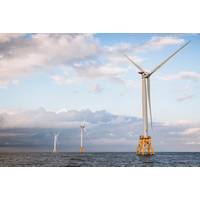
Underwater Power Grids Could Revolutionize How the US East Coast Gets Its Electricity
plants.An offshore transmission backbone could support offshore wind development and the East Coast’s energy needs for generations to come.AuthorsTyler Hansen, Research Associate in Environmental Studies, Dartmouth CollegeAbraham Silverman, Research Scholar, Ralph O’Connor Sustainable Energy Institute, Johns Hopkins UniversityElizabeth J. Wilson, Professor of Environmental Studies, Dartmouth CollegeErin Baker, Professor of Industrial Engineering Applied to Energy Policy, UMass Amherst(Source: The Conversation
Tracking Ship Emissions from Space
A new ground-breaking study by University College London (UCL) Energy Institute, Imperial College and the University of Oxford shows how satellite tracking could be used to monitor compliance with the upcoming IMO 0.5% sulfur emission regulations and Emission Control Areas (ECA).Research conducted by their own researchers, UCL Energy and the University of Oxford and published today in Geophysical Research Letters, has unveiled discoveries that appear important on many levels for they describe the impact of shipping emissions on the climate: because fossil fuel emission particles from ships affect the
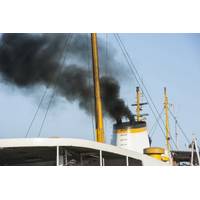
The Poseidon Principles: De-carbonizing Global Shipping
will need to enter the fleet by 2030. This leaves us only ten years to develop the new marine fuels, propulsion technologies and infrastructures that will be required. The Poseidon Principles will help us catalyze this transition.”Dr Tristan Smith, reader in energy and shipping at UCL’s Energy Institute and a member of the advisory council of the Global Maritime Forum, added: “The Poseidon Principles are a mechanism to try and incorporate long-term risk within the shorter-term time frame in which mortgages and loans are established and reviewed by financiers.”The founding signatories
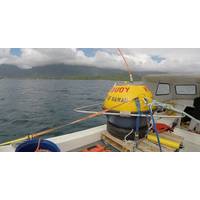
Kāneʻohe WETS Wave Buoy Deployed
The Pacific Islands Ocean Observing System (PacIOOS) said it has deployed a second wave buoy in Kāneʻohe Bay, Oʻahu, installed as part of Hawaiʻi Natural Energy Institute’s (HNEI) efforts to test in-water wave energy conversion devices at the U.S. Navy Wave Energy Test Site (WETS) in Kāneʻohe. Significant wave height and energy period derived from the wave buoys are essential parameters to evaluate the power performance of wave energy conversion devices. To ensure continuous data availability, the Kāneʻohe WETS wave buoy was installed in addition to the existing Kāneʻohe Bay wave buoy
Makai Expands Marine Corrosion Lab
solutions for the prevention of marine corrosion, and are complemented by a strong relationship with researchers at the University of Hawaii’s Hawaii Corrosion Laboratory. The original focus of the MCL was developing marine heat exchangers. Under a contract with the Hawaii Natural Energy Institute, sponsored by the Office of Naval Research, corrosion engineers at the lab were tasked with identifying novel alloys and manufacturing methods for heat exchangers that would be corrosion-resistant, low-cost, compact and highly efficient. Samples of both ferrous and nonferrous alloys made with
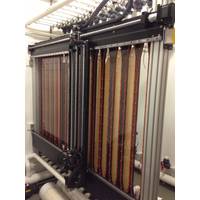
Makai Expands Marine Corrosion Laboratory
solutions for the prevention of marine corrosion, and are complemented by a strong relationship with researchers at the University of Hawaii’s Hawaii Corrosion Laboratory. The original focus of the MCL was developing marine heat exchangers. Under a contract with the Hawaii Natural Energy Institute, sponsored by the Office of Naval Research, corrosion engineers at the lab were tasked with identifying novel alloys and manufacturing methods for heat exchangers that would be corrosion-resistant, low-cost, compact and highly efficient. Samples of both ferrous and nonferrous alloys made with
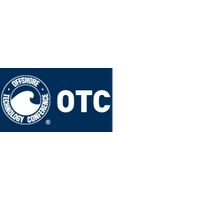
Charity Selected for 2015 OTC Dinner
The Offshore Technology Conference (OTC) announces the 2015 beneficiary of the Annual OTC Dinner—the Independent Petroleum Association of America (IPAA) and the Petroleum Equipment & Services Association (PESA) Energy Education Center for the benefit of the Energy Institute High School. OTC will host the fifth Annual OTC Dinner on Sunday, May 3, 2015 at NRG Stadium in Houston. The event recognizes industry achievements, raises funds for a worthy cause, and provides an excellent opportunity for industry leaders to network with colleagues from around the world. Because of the support of
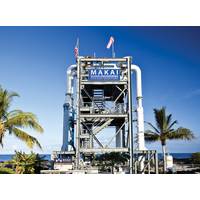
Makai Continues Energy Research in Hawaii
Makai Ocean Engineering received a $3.6 million contract from the Hawaii Natural Energy Institute and the Office of Naval Research for research and design on the marine renewable energy known as Ocean Thermal Energy Conversion, or OTEC. Makai will perform this work at their Ocean Energy Research Center, located in Kona, Hawaii. The promise of OTEC lies in the fact that tropical ocean is earth’s largest solar collector. According to Dr. Joseph Huang, a senior scientist at the U.S. National Oceanic and Atmospheric Administration, “If we can use one percent of the energy [generated by OTEC]
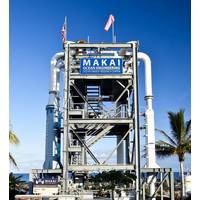
Makai to Continue OTEC Work in Hawaii
Makai Ocean Engineering has received a $3.6 million contract from the Hawaii Natural Energy Institute and the Office of Naval Research for research and design on the marine renewable energy known as Ocean Thermal Energy Conversion, or OTEC. Makai will perform this work at their Ocean Energy Research Center, located in Kona, Hawaii, which is the largest OTEC research facility in the world. OTEC holds great promise because the tropical ocean is earth’s largest solar collector. According to Dr. Joseph Huang, a senior scientist at the U.S. National Oceanic and Atmospheric Administration, “If


 February 2025
February 2025





